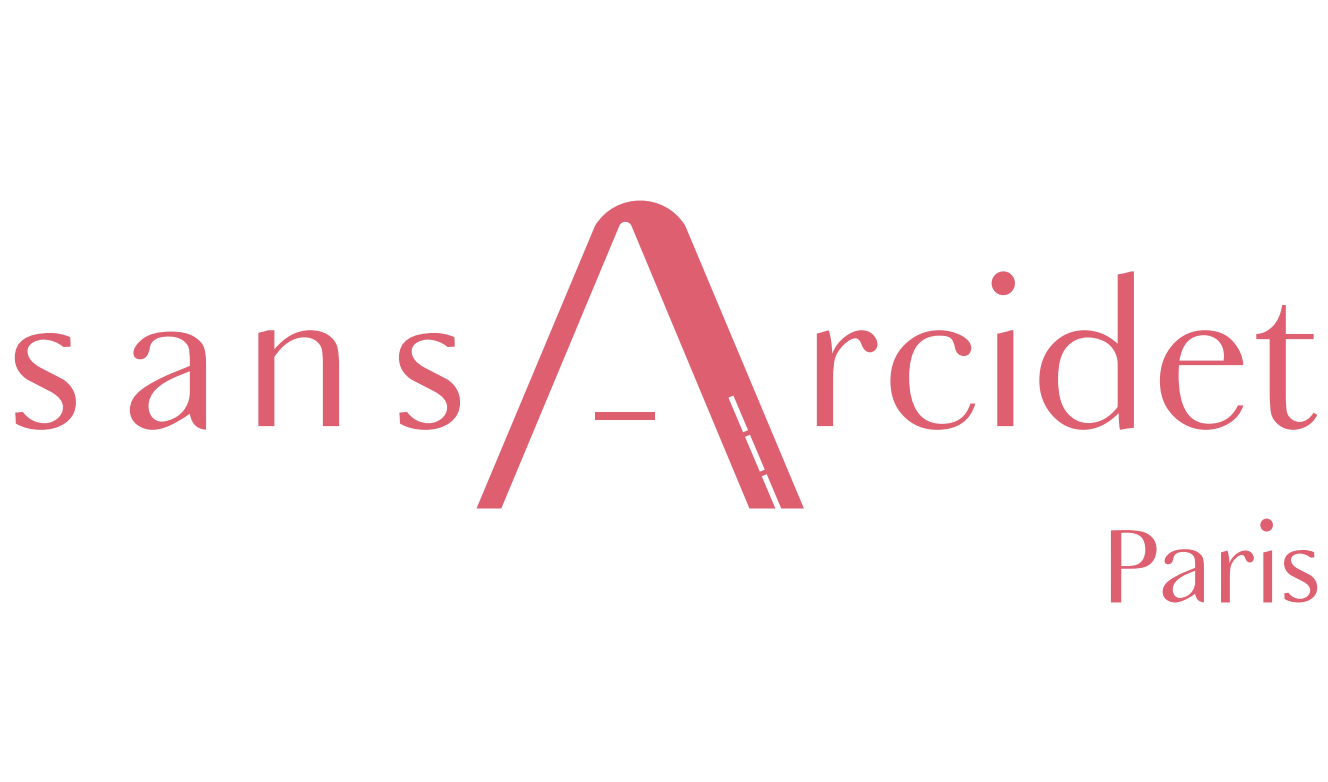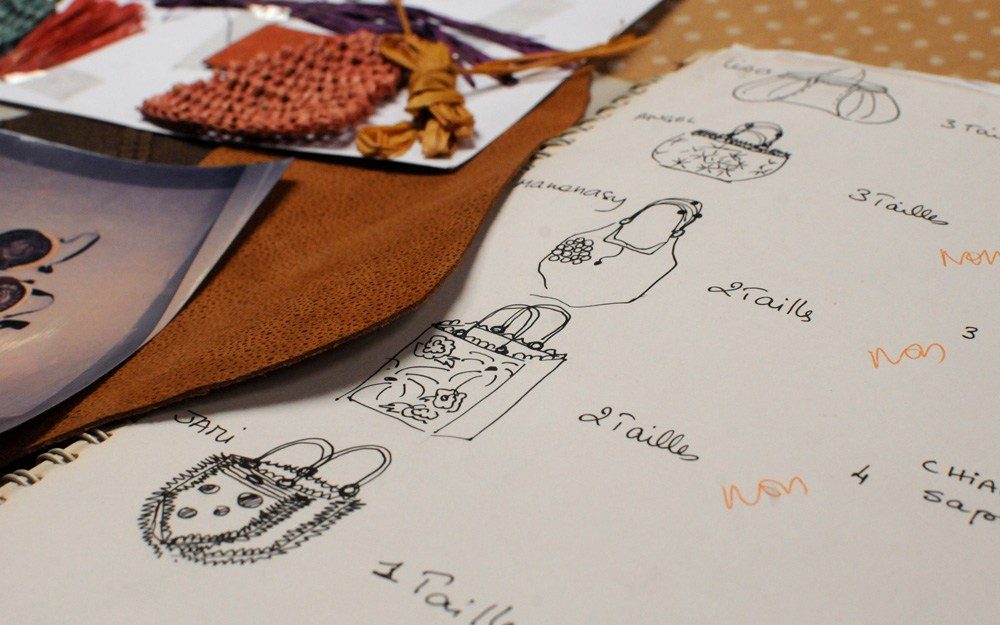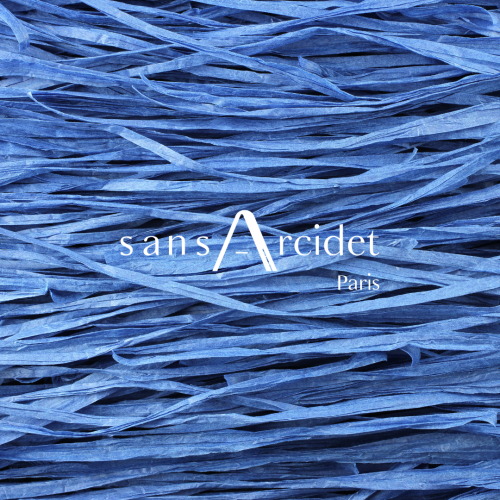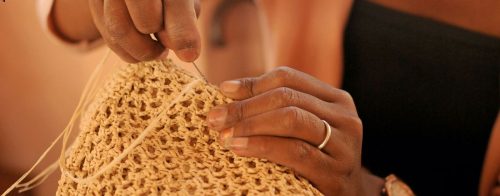Third episode of our series about the backstage of Sans-Arcidet Paris! Would you like to know the different steps during the creation of our accessories and where the creators find the inspiration for their designs? Corinne and Samuel share their secrets with us!

“The common line in this creative process is to offer our clients unique pieces. From the simplest to the most sophisticated, but always durable and of high quality.”
Samuel , co-stylist at Sans-Arcidet Paris.
What are the different steps in the creative process?
Each creation is the result of an initial idea. Then we try to bring it to life, either on paper or on the computer, depending on the type of process imagined or if it is my mother, the head stylist, or myself, the second generation, who is the source! Once this idea is defined, we meet, from Madagascar to Paris, and we discuss the models: Which stitch to use? What volume? What colors? The handles? This part is in my opinion the most exciting part of the creation because everything is possible. We collaborate a lot but each of us sometimes creates more personal models resulting from a desire or after a return from a trip. We alternate these methods, which gives us a great freedom and creativity without limits! The common line in this creative process is to offer our clients unique pieces. From the simplest to the most sophisticated, but always durable and of high quality.
After you receive the sketches, how does the creation of the bag proceed?
The design office takes over, with the information transmitted by the stylist. The designer selects a team of craftsmen who are among the best and most specialized in the processes identified by the designer and the design office. Then, a first prototype is made, usually the body of the bag, which then indicates the procedure to follow.This prototype will tell us if the model needs to continue to evolve (volume, mesh etc. … ) or if we can move to the next step, the choice of handles and the rest of the details such as the lining or the closure system. This body is then duplicated in order to record its ideal weight, as well as the manufacturing time of the different raffia elements. This step is crucial in order to produce the same bag throughout the season. After that, we design the other elements that will complete the body to form a complete bag.
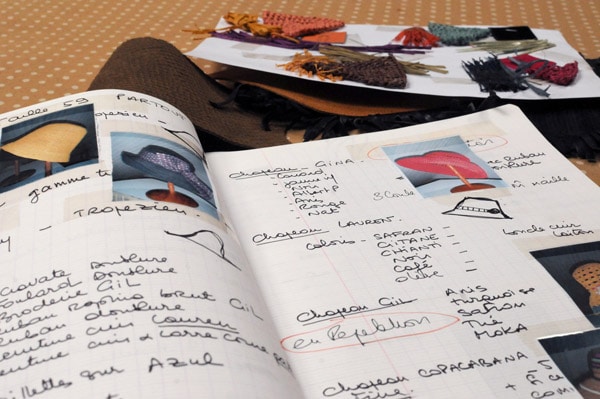
How long does it take to make a bag?
Time varies depending on the complexity of the pattern, but on average 2 to 3 days to make the body and the raffia elements. The complementary elements sometimes take a day and about one to two hours for a complete lining. The development phase can take a few weeks depending on the complexity of the model.
Which step takes the longest?
The realization of the crochet elements takes the most time, because of the weaving, the main material of the bag, compared to leather, for example, which only needs to be cut or assembled. Raffia does not come in spools or woven rolls (except in the case of the rabane) and the fibers are very irregular, which makes it difficult to work and transform. This requires expert hands like those of the artisans we work with to obtain a quality knit. And each hand is different, so each knitted fabric is unique, but designed according to a gauge to guarantee quality and repetition during the season.
Where do you find your inspiration to create your models?
Our sources of inspiration are varied, it can come from crafts from other countries that can be adapted to raffia, physical pieces that we find in markets in France and abroad or at flea markets… We like to have physical pieces to look at, to study, to touch. We are also inspired by other creatives, whether it is Soulages or the first creations of Ralph Lauren. But we are also inspired by the music like De La Soul for their energy and the mindset that a certain song can inspire us. I personally like to be inspired by the world of sports which contrasts a lot with raffia but also compliments it with certain details or colors that are often flashy and fun. The hiking bags of the 60s and 70s, as well as streetwear and the world of motorcycles, inspire me a lot for their practicality and the use of noble materials and details.
In the family, we are great movie lovers, and this often inspires a theme or values to integrate into the collection, but also the kind of people for whom we want to create a model. And sometimes the inspiration comes simply from people around us that we love, to which we want to pay tribute; this is often where the names of models come from. Nature is also a great inspiration; we didn’t invent anything, she made us and everything around us too, so she is, in our opinion, one of the most beautiful muse and we thank her in our own way.
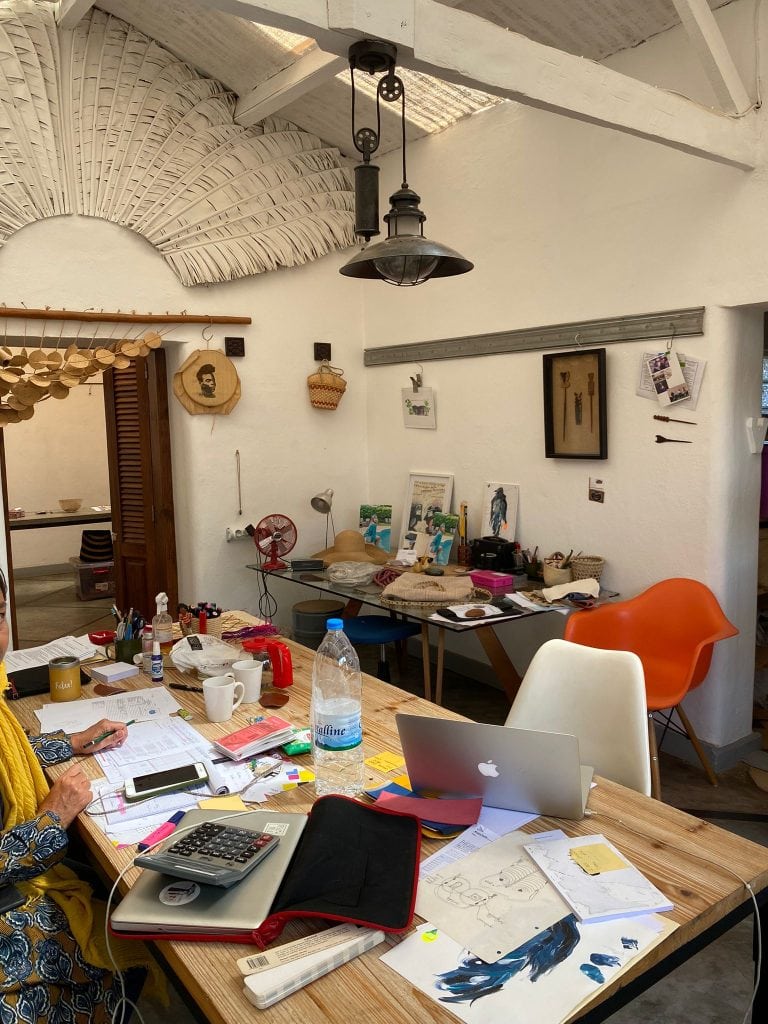
“I think that it is this richness of mixed culture that brings us, since the beginning of the adventure (2000), this extra soul in the Sans-Arcidet products.”
Samuel , co-stylist at Sans-Arcidet Paris.
You want to mix the traditions of Malagasy craftsmanship, and Parisian style in your creations, how is this done during the creative process?
This mixed identity is fundamental in the identity of Sans-Arcidet.
We have made our lives in Paris and Antananarivo at the same time. Corinne, Myriam and Sylvie grew up near Paris, this fantastic city of fashion and culture, but they also spent part of their childhood in Madagascar. The two youngest sisters returned to France and Corinne, the eldest, chose to settle in Antananarivo where I was born and grew up, always close to my mother’s workshops and the expert hands of the women artisans. And I think that it is this richness of mixed culture that brings us since the beginning of the adventure (2000) this extra soul in the Sans-Arcidet products.
To be continued soon, with our fourth episode on the workshops and the Malagasy craft industry.
